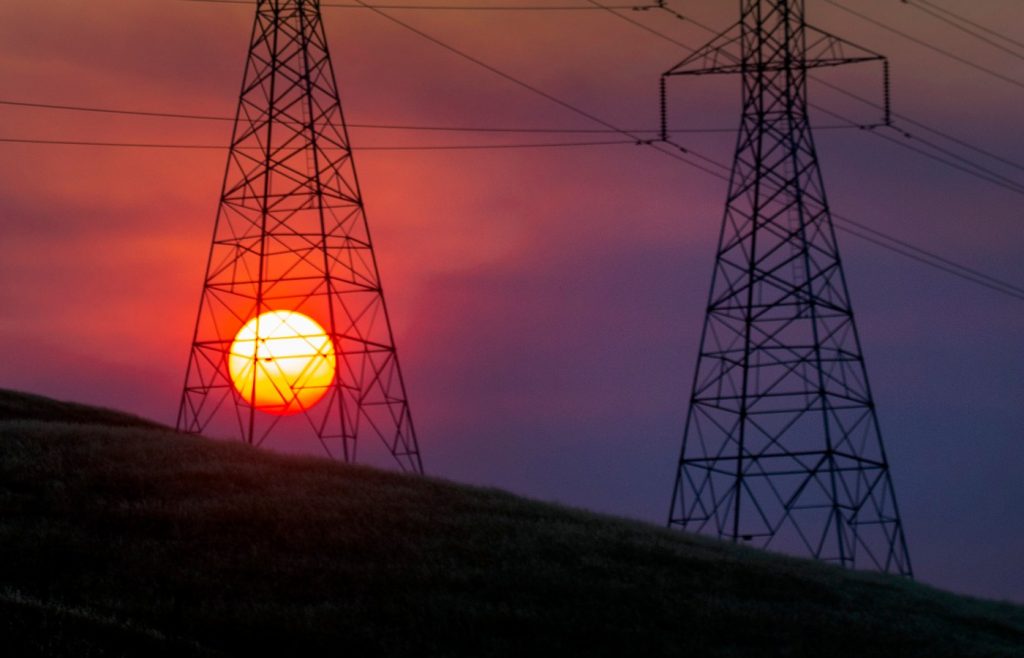OAKLAND — PG&E will reduce electricity rates — temporarily — a move that is poised to cut monthly bills even as customers ponder the forbidding landscape of a hot summer and high power costs.
The utility will reduce residential electricity rates by about 9% starting July 1, the company said.
The lower rates could equate to a reduction of $20 a month for a typical household that uses 500 kilowatt-hours per month of electricity, according to information provided by PG&E.
In 2023, PG&E monthly bills rocketed higher by 22.3% for the average residential customer who receives combined electricity and gas services from the power company.
Over the same 12 months, the Bay Area inflation rate rose 2.6%. Put another way, PG&E bills last year skyrocketed eight times faster than the overall inflation rate in the nine-county region.
“We know that customers are struggling with these bills and that we have to do things to reduce these bills,” Aaron Johnson, PG&E’s senior vice president of local customer engagement said during a live stream from a PG&E’s Hazard Awareness and Warning Center in San Ramon this week.
PG&E’s disclosure of its move to temporarily reduce bills arrived in the wake of comments provided to this news organization by PG&E Chief Executive Officer Patricia Poppe that the utility was determined to bring about a long-term and enduring reduction in customer bills starting sometime in 2025 or 2026.
“We see a future where customers’ bills can start to come down,” Poppe said in an impromptu interview with this news organization about fast-rising ratepayer costs, after an Earth Day event PG&E hosted in Richmond at the vast Ford Point complex on the shores of San Francisco Bay.
The upcoming short-term decrease in electricity bills isn’t part of the company’s endeavors to improve efficiencies and slash expenses as a way to achieve a long-term reduction in the current sky-high PG&E bills.
“This temporary rate change is expected to last for at least a few months, which will help customers during the hottest months of the year when electric bills are usually higher due to air conditioner use,” PG&E stated in an email the utility emailed to this news organization.
Consumers might welcome any billing reductions — even if temporary — especially in the wake of an interim rate increase the state Public Utilities Commission approved earlier this year that triggered higher monthly bills starting in May.
The interim rate increase produced an average bill of $300 a month for the typical residential customer getting combined electricity and gas services. That also marked the first time the average PG&E monthly bill reached the ominous milestone of $300.
As of April 2024, electricity bills averaged $226 a month for the typical residential customer, while gas bills averaged $74, according to PG&E.
Multiple factors have coalesced to allow PG&E to temporarily reduce electricity rates, the company stated.
“We were able make this reduction because we have finished paying off some costs from the past that came for both wildfire protection and prevention as well as rebuilding infrastructure in communities that have been affected by wildfires,” Johnson said.
Related Articles
Wildfire threats make utility companies uninsurable in Northern California
Power demand expected to double by 2040 thanks to AI and EVs, PG&E’s CEO says
Diablo Canyon nuke plant could trigger higher PG&E customer bills, experts warn
Battery-powered California faces lower blackout risk this summer
Letters: Utility tax | Green energy | Higher ideal | Ending violence | No good choice
Oakland-based PG&E has caused a series of deadly and destructive wildfires that torched multiple regions of Northern California including the North Bay Wine Country. PG&E’s equipment also triggered a fatal gas explosion in 2010 that destroyed a San Bruno neighborhood.
The utility said it achieved savings in multiple ways. Among cost-cutting measures and results:
— $300 million in savings from more efficient vegetation management
— $68 million in savings from more efficient methods of burying power lines, especially in rural areas.
— $1.8 billion in projected savings over the next four years by self-insuring its operations.
“A 9% rate reduction is a drop in the bucket for customers who have been slammed” by monthly bills that have soared, said Mark Toney, executive director with The Utility Reform Network, or TURN, a consumer group.
Since Jan. 1 of this year, PG&E has submitted four fresh proposals for rate increases to the state PUC, Toney added.
“It is disingenuous for PG&E to take credit for a rate reduction that they are required by the PUC to pass along to customers who have made the final payment on a portion of the billions of dollars in utility overspending on wildfire mitigation,” Toney said.
PG&E CEO Poppe said in the April interview that the utility can find ways to accomplish intricate cost controls, widen technology deployment and improve safety measures, all of which could lead to lower bills.
“We see prices falling in the future and we are working every day to make that happen,” Poppe said.


